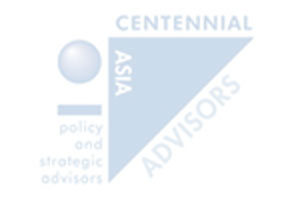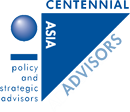Asian Insights
A summary of “Asian Insights” weekly update is published here. The full version is available through paid subscription. Please click here to register your interest. Our executive will get in touch with you.

Highlights from the CAA Weekly Table
What has changed?
- Asian economies: The weak set of economic indicators for October does not detract from our view of a modest upside surprise in the Chinese economy, driven by rising infrastructure spending and improved flows of credit to the private sector. The rout has deepened in India as factory output shrank again. Stirring food prices are unlikely to deter the central bank from cutting rates again. The Singapore economy is stabilising after a bruising year but the government is struggling to stir domestically-driven growth. A whole-of-government approach to bureaucratic reforms is firming up in Indonesia, while a marginal trade surplus in October bodes well for the external accounts. 3Q19 GDP growth moderated to still-respectable levels in Malaysia, but moribund private investment remains a worry. In the Philippines, the Duterte administration will push hard for tax reform but, with 5 weeks to go before Congress goes on recess, progress is likely to be limited.
- Asian political risks: Tensions in Hong Kong are reaching a boiling point: risks of an escalation will be higher after the district elections in late November. The locus of geopolitical risk is poised to shift next to Taiwan which is gearing up for presidential and legislative elections in January. Despite the recent botched suicide bombing in Indonesia, we believe that the security apparatus still retains the initiative against terrorist networks.
Green shoots in global manufacturing a positive for Asia
- Global manufacturing activity seems to be turning around slowly as shown in the purchasing manager index for manufacturing edging up and inventory restocking resuming.
- But weak capital spending is limiting any immediate upside in demand for Asian exports.
- Thus, our lead indicator shows no sign of Asian exports picking up just yet. Instead, there is some evidence pointing to an improvement in business sentiment and capex by 1H20.
Malaysia: Political tensions likely to come to a head soon
- The magnitude of the ruling PH coalition’s defeat in the Tanjung Piai by-election indicates that both Malay and Chinese voters have turned against it. If these voting patterns are repeated in a general election, PH would be reduced to a rump.
- The coalition will struggle to overcome its weaknesses. Its component parties hold widely divergent views on critical issues, there is no dominant party to ensure a coherent view across the grouping and neither is there a leader strong enough to unite the parties.
- Tensions are likely to spike for several reasons. The victory will embolden the opposition to step up their stoking of racial and religious sentiments against the government. The defeat is also a stinging rebuke for Prime Minister Mahathir, who is coming under pressure to hand over power as promised to Anwar Ibrahim. Internal divisions within the PH are also growing.
- These tensions could soon come to a head and force a political re-alignment, at the expense of the economy

Highlights from the CAA Weekly Table
What has changed?
- Global economy up but not much immediate good for Asia: There is more evidence of a pickup in the global economy but the positive spillovers to Asia will not materialise immediately: Tentative signs of a bottoming in the global tech cycle have emerged while a modest recovery is unfolding in China. However, it will take time for business confidence to recover to the point where import demand from the advanced economies accelerates. Also, Asian central banks now have less policy space.
- Asian political risks: Xi Jinping came out of his party’s Fourth Plenum stronger but not infallible. The risk-averse President is likely to double down on repression in both China and Hong Kong. In Indonesia, the re-alignment of ministries under the 4 coordinating ministries, appointment of several capable deputy ministers as well as tantalising signs of bureaucratic reforms show President Jokowi’s commitment to vigorously streamline policymaking.
- Asian economies: India withheld its endorsement of RCEP after encountering strong domestic opposition which fears a deluge of Chinese imports – but an agreement still seems likely by Feb 20. A substantial upturn in Taiwan’s economy is likely to be sustained as reshoring adds a tailwind to its export engine. We are more positive than others on the Singapore economy which is set to turn a corner this quarter as sentiment improves in even its most battered sectors. The Thai economy is climbing out of its trough: we see a return of private investment in 2H20 adding lustre to the medium-term outlook. In the Philippines, buoyant credit growth and a surge in government spending likely paved the way for a rebound in GDP growth above 6% last quarter. Foreign investment realisation finally sprang back into the black in Indonesia in 3Q19, after declining for 5 successive quarters but manufacturing investments remained desultory, strengthening the case for structural reforms to improve competitiveness.
Asian monetary policy: A brief pause in 4Q19; easing to resume in 1H20:
A pause in rate cuts by the US Fed translates to less policy space for Asian central banks in the near-term.
- With the notable exception of India, which is poised to lower rates again in Dec 19, all signs are pointing to a pause in the region’s easing cycle before rate cuts resume in 1H20.
- China is likely to enact a 25 bps cut in reserve requirements in 1H20 to safeguard the nascent recovery that is now taking hold. Both South Korea and Taiwan should keep rates on hold from here on amid signs of the global economy bottoming out.
- We expect no further easing from Singapore’s central bank: it will wait to assess the impact of October’s easing. An improving economic outlook could herald the start of an extended lull in easing as the conservative Bank of Thailand grapples with financial stability risks.
